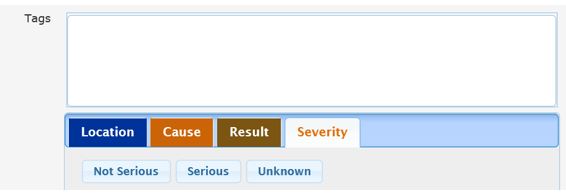
Wisconsin Department of Children and Families - Division of Early Care and Education
Bureau of Early Care Regulation
Child Care Certification Policy Manual
The intake person should keep in mind the following who, what, when, where, why and how questions in eliciting as much information from the complainant as possible:
WHO: Who are the persons involved, including the complainant, any witnesses, any children that were injured and any staff/employees at the certified program? If names aren’t available, what did the person(s) look like? How can persons involved in the incident be contacted? Does complainant know of anyone else who might have knowledge of this or similar incidents? What is the complainant’s relationship to the certified program? Is the complainant an employee, former employee, parent, volunteer, CPS agency, etc.? How does the complainant know that the incident occurred? What are the names, ages or dates of birth of any children involved, if known?
WHAT: Specifically, what occurred? Is the complainant aware that administrative rules have been violated? What was the complainant’s involvement? What is the severity of the action (or lack of action) and any injuries sustained? What is the condition of other children in care? If the complaint concerns abuse or neglect, has the county CPS agency been informed? What was their response?
WHEN: When did the incident occur, including, if possible, month, day, time, season, year? If the behavior has been reoccurring, when and how often has it been observed? Does a reoccurrence suggest a pattern of behavior? When is the best time to visit the program to see the behavior or incident? Was there anything special about the day, such as a school holiday, holiday weekend, field trip day, etc.?
WHERE: Where did the incident occur? Inside or outside the program? In what room did it occur? Was furniture or equipment involved and how?
WHY: Why did the incident happen? Did it appear to be the result of a spontaneous emotional outburst or routine behavior? Was an operator/provider sick? (These “why” questions may be related to motive but may not be relevant to the facts of the violation itself.)
HOW: How did the incident occur? What was the sequence of events? How often has it occurred? How does the complainant know it occurred? Does the complainant have any documentation?
Give the complainant a final opportunity to add anything else they haven’t already stated.
The WISCCRS Complaint/Incident enables the certification worker to document, as part of the complaint or incident record, “Tags” when a child is injured/medical attention needed. The tags collect information regarding a child’s injury, including location, cause and result. If the complaint (or incident) indicates a child was injured, then tags must be selected as part of the record/data entry.
For the purposes of child care regulation, the Department has expanded the definition of “serious injury” beyond that which is contained in §48.981, Wis. Stats.
A “serious injury” is:
Death or substantial risk of death,
A broken or fractured bone,
A concussion,
Any other injury that requires medical treatment from a physician, dentist, registered nurse, licensed practical nurse, paramedic, physician assistant, or emergency medical technician.
Example #1
A child fell and bumped his tooth. The child’s parents took him to the dentist where an x-ray was taken. The dentist advised to let the tooth fall out naturally, noting that the permanent tooth may be delayed. This is not a serious injury. The dentist evaluated the child, which included the x-ray, and determined no treatment was necessary.
Example #2
A toddler was climbing on the outdoor play structure. She fell and hit her face on the step. There was a large cut under her nose. The child was seen at the doctor’s office. The doctor advised that the cut was superficial and no treatment other than Neosporin several times a day was needed. This is not a serious injury. The treatment of Neosporin was given by the parents.
Example #3
A seven-year-old fell off the top of a seven-foot slide, hitting their head on the ground. The child was seen in the emergency room, had a CT scan, and it was determined that the child suffered a concussion. This is a serious injury. Although, no treatment was given, the child was diagnosed with a concussion.
Example #4
A child slipped on a toy, fell, and hit their arm on the floor. The child was taken to the doctor the following day where it was determined that the child’s arm was fractured and put in a cast. This is a serious injury. The cast is considered treatment.
Note: Broken or fractured bones (collar bone, ribs, etc.) without treatment are also considered serious.
Location: The following injury tags are available in WISCCRS:
Indoors
Other Location
Outdoors
Vehicle
Cause: The following tags are available:
Fall/Trip/Slip/Pinch
Incident but no injury (medication error/illness)
Other Cause
Struck by or against object or person
Result: The following tags are available:
Bump/Bruise/Concussion
Cut/Scrape/Scratch/Open wound
Death
Fracture/Strain/Sprain
Other Result
Serious Injury Designation
Certification workers will need to determine if the injury meets the new definition of a serious injury and indicate this by selecting the appropriate severity tab.

Note: Tags are selected/entered upon initial intake of the complaint/incident recording. If after the investigation it is determined the initial tags need to be modified/corrected, the certification worker is able to edit/modify the Tags.
See the WISSCRS User Guide-Complaints/Incidents for additional information.
This page last updated 06/2021.